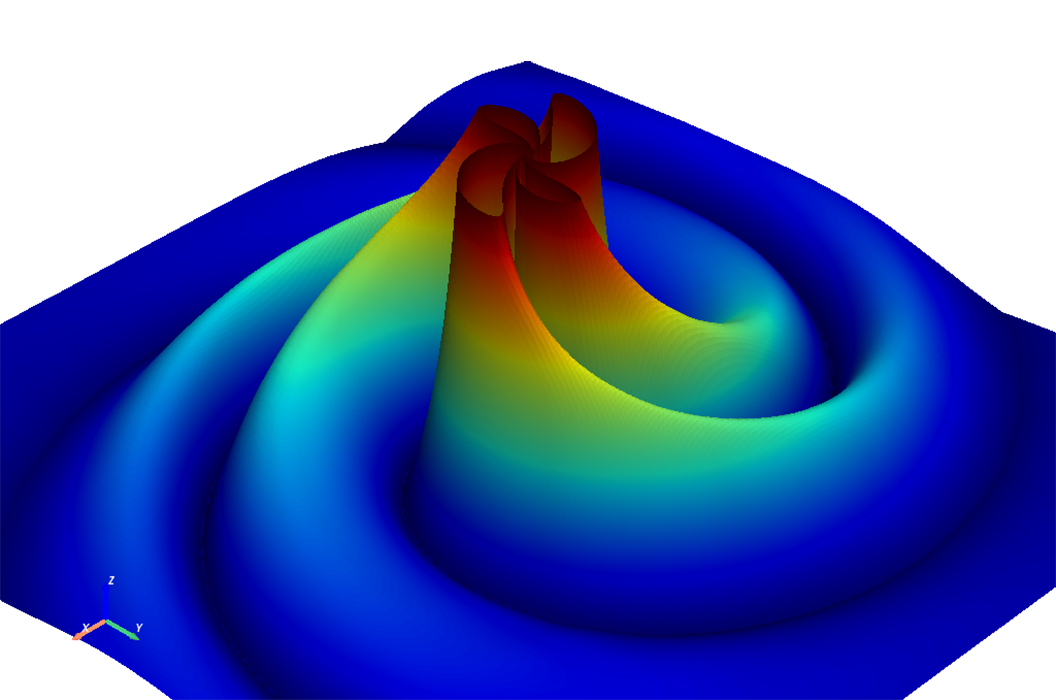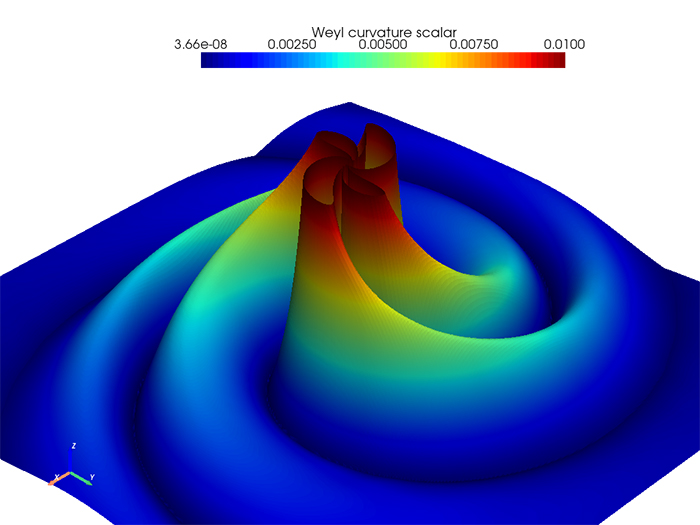 IHES
IHES
Observation of a dynamical capture of two black holes
A group of researchers, some of whom are connected to IHES, has recently suggested that an enigmatic gravitational wave event, different from the ones observed so far, could have been generated by the dynamical capture of two heavy black holes in a dense stellar environment.
The team includes Alessandro Nagar, former holder of the Chair of Cosmology and Astrophysics, as well as former visiting researchers Sebastiano Bernuzzi, Piero Rettegno, Rossella Gamba, Simone Albanesi, and Gregorio Carullo. The gravitational wave signal they have been working on is GW190521, which was detected by the LIGO and Virgo observatories in 2019.
The idea came from a very sophisticated data analysis carried out under the lead of Prof. Sebastiano Bernuzzi (FSU Jena) and Dr. Alessandro Nagar (INFN Torino). Their respective groups developed a general-relativistic framework for highly eccentric black hole mergers and performed an in-depth analysis of the observational data.
No dynamical capture models had ever been employed in gravitational wave data analysis before, meaning that the analysis required extreme care and considerable computational power.
These results were published on November 17 in the scientific journal “Nature Astronomy” [1]
Alessandro Nagar held the Chair of Cosmology and Astrophysics at IHES and was at the Institute between 2007 and 2016. He has been a frequent visitor to IHES ever since.
Simone Albanesi, Sebastiano Bernuzzi, Gregorio Carullo, Rossella Gamba , Alessandro Nagar, and Piero Rettegno visited IHES in 2022 and have collaborated with Thibault Damour, permanent professor at IHES, who participated in some of the discussions that led to these results. Some of these visits were funded thanks to the support of the Balzan Prize Foundation, thus contributing to train a new generation of physicists in GW astronomy, in the full spirit of the Balzan Prize.
IHES warmly congratulates the group on these important results!

obtained via numerical relativity simulations.
Strange black hole merger may have been a rare random encounter, find more about this news in an article published on ArsTechnica.
[1] Gamba, R., Breschi, M., Carullo, G. et al. GW190521 as a dynamical capture of two nonspinning black holes. Nat Astron (2022). https://doi.org/10.1038/s41550-022-01813-w



